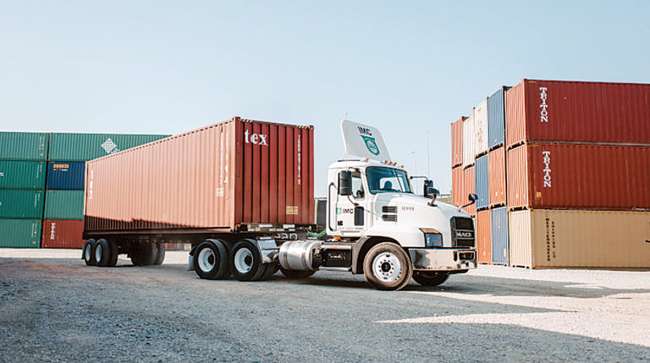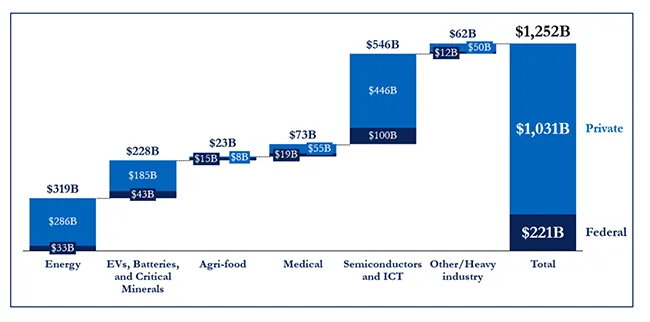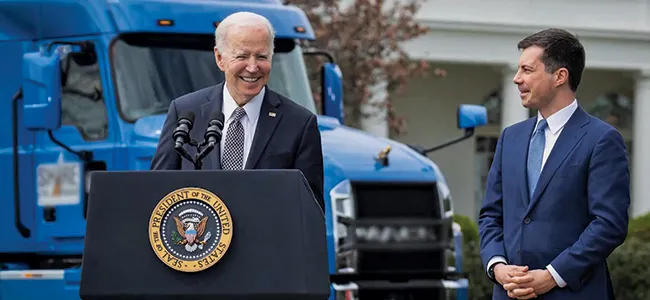Staff Reporter
White House Report Highlights Supply Chain Accomplishments

[Stay on top of transportation news: Get TTNews in your inbox.]
The U.S. Department of Transportation released a four-year review of how it strengthened the supply chain, and identified future challenges such as cybersecurity, within a massive new report called the White House 2021-2024 Quadrennial Supply Chain Review.
“In less than four years, we’ve gone from supply chain disruptions unlike anything we’ve seen in peacetime, to much higher levels of resiliency and reliability. That work has helped make it possible to move record levels of cargo in and out of the U.S., bring shipping costs down, and ensure essential goods arrive on time,” said Transportation Secretary Pete Buttigieg.
Trucking issues are listed in the transportation sector of the 383-page report to President Joe Biden fulfilling his June 14, 2024, Executive Order 14123 directing the White House Council on Supply Chain Resilience to recommend how federal agencies can improve the supply chain. The order also mandates that different government branches identify funding and other resource needs to build resilience, mitigate systemic shocks and prevent disruptions.
At the top of future transportation supply chain issues identified from 2025 through 2028 is managing U.S.-China geopolitical tensions.
20212024-Quadrennial-Supply-Chain-Review
“The U.S. transportation industrial base will face a range of challenges as it strives to build more resilient and sustainable supply chains. These efforts could require balancing efficiency with preparedness to mitigate risks such as geopolitical tensions, climate change and cybersecurity threats, while also seizing opportunities through reshoring, nearshoring, infrastructure investment and digital transformation,” the DOT forecast stated.
Other risks to transportation are tied to climate change. “The frequency and severity of hurricanes, wildfires and floods are expected to increase, posing a threat to critical infrastructure such as ports, highways and railways,” the report mentioned.
Future uncertainties will arise from environmental laws to lower carbon emissions. DOT expects hurdles will surface from government regulations shifting traditional fuels to alternative sources and in establishing greener logistics systems. “This will create challenges but also opportunities, as businesses that adopt sustainable practices will benefit from improved operational efficiency and regulatory compliance,” DOT stated.

U.S. government and private sector announced investments in critical sectors since 2021. (2021–2024 Quadrennial Supply Chain Review)
The likelihood of future cyberattacks targeted at transportation infrastructure is another important area to watch. Increasing digitalization in transportation raises the risk of cyberattacks that could disrupt logistics networks or compromise data security. “Protecting these digital systems will require robust cybersecurity frameworks and closer collaboration between public and private sectors to prevent and mitigate potential disruptions,” the report said.
The White House supply chain report features detailed four-year reviews of 10 key areas of the national economy. These sections examined the industrial bases for transportation, energy, defense, information/communications technology and public health/biological preparedness. The multiyear reviews dealt with supply chains for semiconductors, advanced batteries, critical minerals, agri-food supplies and pharmaceuticals/active pharmaceutical ingredients.
The Department of Transportation noted its accomplishments include ocean shipping prices now 70% lower from their peak four years ago. “Today fewer than 20 containerships are waiting to dock at U.S. ports, compared to over 150 backed up during the peak of congestion,” it stated.
Trucking industry accomplishments were also detailed. “DOT has undertaken several initiatives to enhance recruitment, training and diversity within the industry. DOT has significantly expanded trucking apprentice programs across the country. These programs offer structured training and mentorship opportunities for aspiring truck drivers, aiming to attract more individuals to pursue careers in trucking. By doubling the number of these programs, DOT seeks to address staffing issues experienced by trucking companies,” the agency declared.
DOT said it has worked to simplify commercial driver license applications so new truck drivers have an easier experience entering the career field. The agency noted that it promoted diversity by establishing a Women of Trucking Advisory Board to encourage gender equality, break down barriers and encourage women to opt for trucking careers.

President Joe Biden and Transportation Secretary Pete Buttigieg. (USDOT via X)
In addition, the White House report mentioned, “Financial support has also been provided by DOT to assist states in expediting the issuance of CDLs. Grants totaling over $44 million have been allocated to states, enabling them to enhance their CDL issuance systems, improve training programs and streamline administrative processes.”
A Trucking Action Plan, in a joint effort with the U.S. Department of Labor, was created for new apprenticeship programs. It also established a pilot project to attract drivers 18 to 21 years old. “These efforts aimed to stabilize the trucking workforce and create long-term career pathways to attract and retain talent,” the report explained.
Experts from Sailun Tires dive into strategies for managing tire expenses amid a challenging freight market. Tune in above or by going to RoadSigns.ttnews.com.
Other DOT hallmarks have been distributing bipartisan infrastructure law funding and creating the Office of Multimodal Freight Infrastructure and Policy to improve the national freight network and supply chains.
The Multimodal Freight Office is working closely with a new supply chain office at Transport Canada to solve mutual problems. Europe has been another focus area. Multimodal Freight Office representatives have visited European partners — including allied ports, manufacturers and logistics companies — to discuss trade and shared interests.
Also the multimodal freight office created DOT’s Freight Logistics Optimization Works program to partner with freight carriers, cargo owners, logistics providers, port operators and trade associations.
FLOW has improved supply chain visibility and improved cargo handling of shipments. Incoming and outgoing data sharing now covers 75% of all U.S. container imports and 80% of U.S. container terminal capacity. Its 86 members sharing information include:
- 11 of the world’s largest ocean carriers
- 10 of the largest U.S. importers
- Nine of the largest U.S. container ports
“Efficient supply chains enable American businesses to deliver goods faster and reduce costs for consumers,” DOT stated.
It is currently establishing a National Multimodal Freight Network to help states direct resources to enhance system performance for better freight movements and prioritize how federal grants are spent.
Want more news? Listen to today's daily briefing below or go here for more info:





